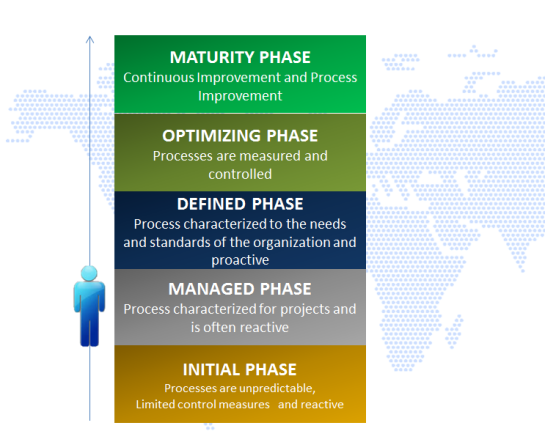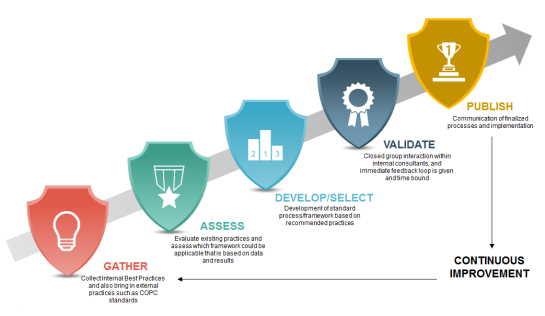One key element of a successful organization is to be able to increasingly achieve operational excellence by standardizing core business processes. Streamlining processes could have several benefits for an organization - eliminating defects and inefficiencies and drive cost optimization, to name a few.
However, standardization of processes is easier said than done, its success could depend on various factors, such as the availability and maturity of standard framework, complexity of the processes, and other factors coming from external requirements (i.e., client processes, tools and technology limitations, evolving industry standards).
An organization may go through several phases to fully achieve process ‘maturity’ state, where continuous improvement and process compliance comes into play. And often times, it could be a long and tedious journey. At Transcom, we firmly believe that standardizing and optimizing our internal processes is equally important to accelerate our business and value proposition for our clients. Over the past years, we have become more proactive on identifying, understanding and analyzing internal processes from different areas in our business to enable us to reach our desired state of maturity.
In order for us to effectively manage this, we have introduced an approach on standardization, where we gather processes and best practices from different regions, assess these based on their relevant success measures and tangible gains. From this point, we can then select the processes which are scalable and can be implemented globally or develop a new framework containing several pockets of processes from each region.
At Transcom, we firmly believe that standardizing and optimizing our internal processes is equally important to accelerate our business and value proposition for our clients. Over the past years, we have become more proactive on identifying, understanding and analyzing internal processes from different areas in our business to enable us to reach our desired state of maturity.
In order for us to effectively manage this, we have introduced an approach on standardization, where we gather processes and best practices from different regions, assess these based on their relevant success measures and tangible gains. From this point, we can then select the processes which are scalable and can be implemented globally or develop a new framework containing several pockets of processes from each region. We believe that when process standardization is implemented successfully, significant results can then be measured by the enhancement of our overall service delivery, customer satisfaction and loyalty, increased productivity, development of skills of our employees, efficiency and increased profit resulting in higher and faster return on investment (ROI).
We believe that when process standardization is implemented successfully, significant results can then be measured by the enhancement of our overall service delivery, customer satisfaction and loyalty, increased productivity, development of skills of our employees, efficiency and increased profit resulting in higher and faster return on investment (ROI).
Send to friend At Transcom, we firmly believe that standardizing and optimizing our internal processes is equally important to accelerate our business and value proposition for our clients. Over the past years, we have become more proactive on identifying, understanding and analyzing internal processes from different areas in our business to enable us to reach our desired state of maturity.
In order for us to effectively manage this, we have introduced an approach on standardization, where we gather processes and best practices from different regions, assess these based on their relevant success measures and tangible gains. From this point, we can then select the processes which are scalable and can be implemented globally or develop a new framework containing several pockets of processes from each region.
At Transcom, we firmly believe that standardizing and optimizing our internal processes is equally important to accelerate our business and value proposition for our clients. Over the past years, we have become more proactive on identifying, understanding and analyzing internal processes from different areas in our business to enable us to reach our desired state of maturity.
In order for us to effectively manage this, we have introduced an approach on standardization, where we gather processes and best practices from different regions, assess these based on their relevant success measures and tangible gains. From this point, we can then select the processes which are scalable and can be implemented globally or develop a new framework containing several pockets of processes from each region. We believe that when process standardization is implemented successfully, significant results can then be measured by the enhancement of our overall service delivery, customer satisfaction and loyalty, increased productivity, development of skills of our employees, efficiency and increased profit resulting in higher and faster return on investment (ROI).
We believe that when process standardization is implemented successfully, significant results can then be measured by the enhancement of our overall service delivery, customer satisfaction and loyalty, increased productivity, development of skills of our employees, efficiency and increased profit resulting in higher and faster return on investment (ROI).